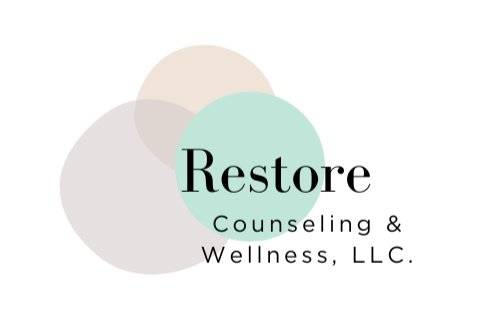
EMDR Therapy in Va. Beach & Online
Evidence-Based Support for Deep Healing
EMDR Therapy: Transforming Pain into Peace
Freeing you from the past so you can thrive in the present
Why EMDR
Have you tried talking it through and still feel triggered, anxious, or stuck in old pain? EMDR (Eye Movement Desensitization & Reprocessing) offers a path forward—it helps resolve distressing memories without being overwhelmed by them. Think of it as helping your brain reprocess what it’s holding onto so you can find lasting peace.
Why it Matters
Old wounds lose their power.
You gain clarity, resilience, and emotional freedom.
Different from talk therapy. You won’t have to relive every detail—bilateral stimulation (like eye movements or tapping) helps your nervous system process trauma safely.
“For all of us, unprocessed memories are generally the basis of negative responses, attitudes and behaviors. Processed memories, on the other hand, are the basis of adaptive positive responses, attitudes and behaviors.”
― Francine Shapiro
Frequently Asked Questions about EMDR Therapy
-
Each session is guided by your pace and comfort. We’ll start by identifying a memory, feeling, or belief that feels distressing. Then, using gentle bilateral stimulation (like eye movements, tapping, or sound), we help your brain begin to process that experience in a new, less painful way. You’re fully awake and in control throughout the process, and we always return to grounding tools at the end of each session to ensure you leave feeling steady and supported.
How It Works (in 8 Gentle Phases)
History & Planning – We look at your story and choose what to work on.
Preparation – I guide you through tools to feel supported and safe.
Assessment – You identify the thoughts, emotions, and sensations tied to painful memories.
Desensitization – Using bilateral stimulation, we help the brain process distress gently.
Installation – We strengthen healthier beliefs you're ready to embrace.
Body Scan – You check in with your body to ensure healing feels full.
Closure – Sessions end with grounding and calm, even if memory work continues.
Reevaluation – We revisit your experience and track progress.
-
If you feel anxious, on edge, shut down, or stuck in past pain—EMDR can help.
This powerful therapy is proven to help with trauma, PTSD, anxiety, grief, depression, panic attacks, phobias, low self-esteem, and more. It’s especially helpful when you feel like you’ve tried everything, but something is still holding you back. Together, we’ll clarify your goals and begin the work of gently reprocessing what your brain and body haven’t yet been able to release. You don’t have to stay stuck. You don’t have to carry it alone. Healing is possible—and it can start here.
-
While talk therapy helps you explore thoughts, emotions, and patterns, EMDR goes deeper by working directly with how the brain and body store distressing experiences. Sometimes, no matter how much insight you gain, your nervous system still reacts as if the danger is happening now. That’s because trauma memories can get “stuck” in the brain in unprocessed form, triggering anxiety, fear, shame, or emotional shutdown—even years later.
EMDR helps reprocess those memories so they lose their emotional charge. Instead of getting stuck in the pain, your brain learns to store the experience in a way that feels resolved and less activating. You don’t have to talk through every detail—instead, EMDR allows your system to do the healing work in a more natural and often faster way. It's less about retelling the story, and more about helping you finally move forward from it.
-
The length of EMDR therapy depends on your unique history, goals, and the depth of what you’re carrying. For some people, especially those processing a single incident or recent trauma, noticeable relief can come in just a few sessions. For others—particularly those navigating complex trauma, childhood wounds, or long-standing patterns—EMDR may be part of a longer journey.
That said, EMDR is often more efficient than traditional talk therapy when it comes to resolving the root causes of distress. Unlike coping strategies that manage symptoms, EMDR works to shift the emotional charge at the source. We’ll take the time to prepare your nervous system, build safety and trust, and move through the process at a pace that feels right for you. You’re never rushed, and you’ll always be supported along the way.
Healing isn’t linear—but EMDR helps clear the path.
Get Started Today
When we work together, EMDR is integrated with somatic tools and compassionate support. We move at your pace, ensuring you feel safe and regulated. Our goal isn’t just relief—it’s transformation that lasts.
Here’s how to get started:
Fill out the contact form or text “Restore” to (757) 932‑0587
Schedule a free 20-minute consultation
Begin shaping your path forward—at your rhythm

